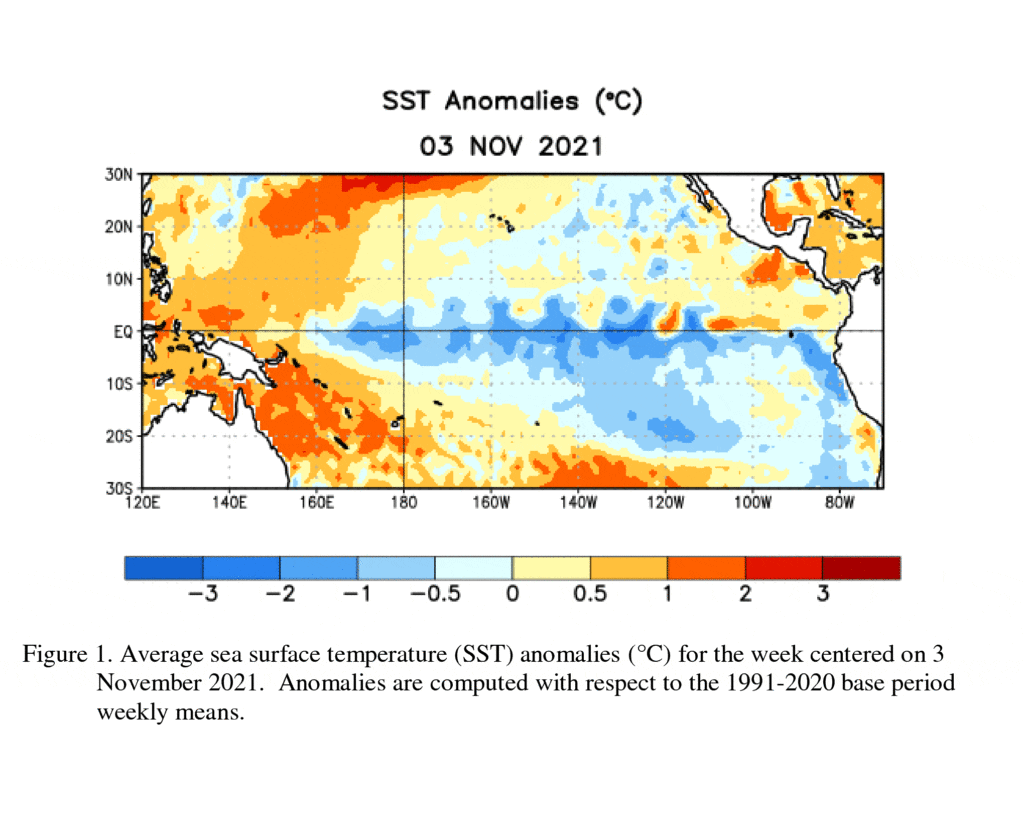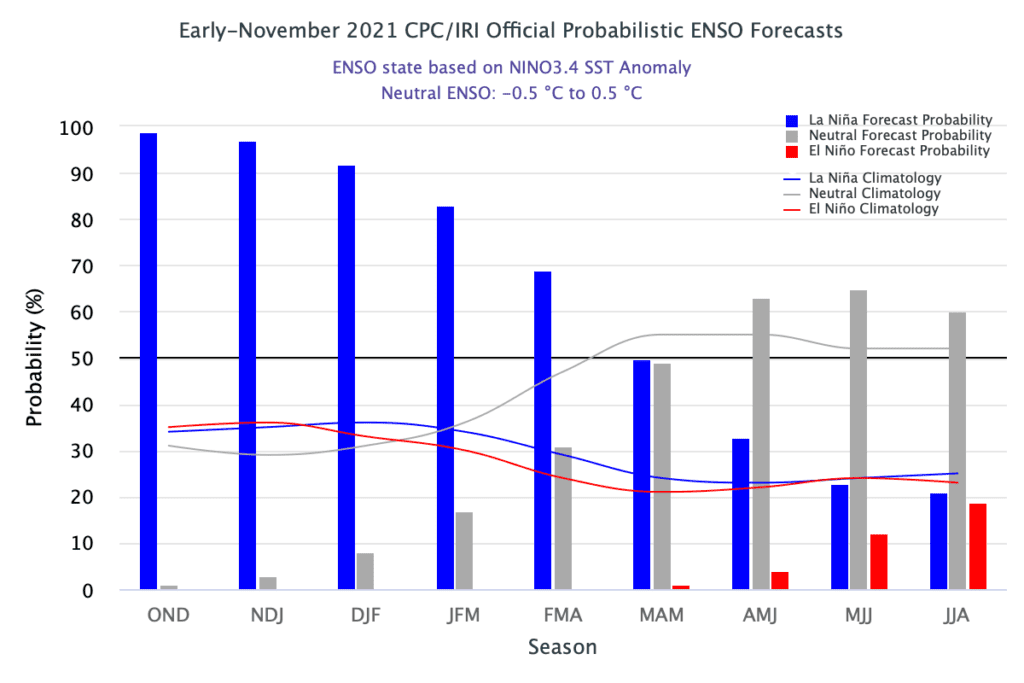On Thursday, NOAA’s Climate Prediction Center issued their monthly update on the state of ENSO. After developing in September, La Niña continued and strengthened during October. Below-average sea surface temperatures (SSTs) are now being observed across most of the equatorial Pacific:

In the past week, all the Niño index values were between 0.7°C and 1.0°C below normal. Beneath the surface, cooler-than-average temperatures were observed at roughly the same amplitude as observed at this time last month. This reflected the prevalence of below-average water temperatures throughout the eastern Pacific Ocean. Low-level easterly and upper-level westerly wind anomalies were again observed over parts of the equatorial Pacific, although weaker than last month. Tropical convection was suppressed near and west of the Date Line and was slightly enhanced over Indonesia. The Southern Oscillation Index and Equatorial Southern Oscillation Index remained positive. Putting all these factors together, the coupled ocean-atmosphere system was quite consistent with a weak to moderate La Niña.
The International Research Institute/Climate Prediction Center’s plume average of forecasts for the Niño-3.4 SST index favors La Niña to continue through January-March 2022 season. However, the forecaster consensus anticipates La Niña may persist even longer, now potentially not returning to ENSO-neutral until sometime between April and June 2022. CPC is predicting the Niño-3.4 index has a 66% chance of reaching a value less than -1.0°C between November 2021 and January 2022, but only a 14% chance of being below -1.5°C. Thus, at its peak, a moderate-strength La Niña is favored.

La Niña is anticipated to have a significant impact on temperature and precipitation across the United States from late fall through early spring. For Central and South Texas, this moderate La Niña is expected to cause overall temperatures to average above normal and precipitation to average below normal.
In summary, CPC forecasters indicate there is a ~90% chance for La Niña to continue through the Northern Hemisphere winter 2021-22. There is a ~50% chance for La Nina to continue during March-May.
Will this La Niña, already a second year La Niña, end up as part of a trilogy? Three La Niña winters in a row isn’t unprecedented—that happened in 1973–1976, and 1998–2001—but it is relatively unusual. We will have a better idea by the late spring about what may happen with ENSO in 2022–2023.
Bob


Social Media